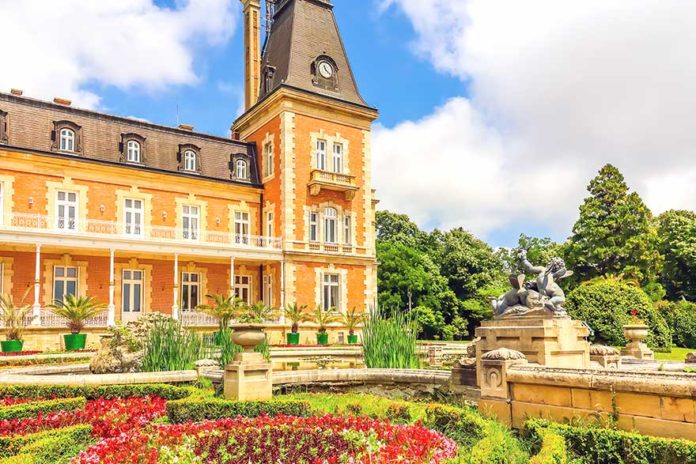The Evksinograd residence is a unique historical landmark on the Black Sea coast, just 8 km north of Varna. Situated on a three-kilometer stretch of coastline, this complex is near the resort of St. St. Konstantin and Elena. Initially, it was a summer residence of the monarchs who governed Bulgaria after the country’s liberation from Ottoman rule in 1878—Alexander Batemberg, Ferdinand, and Boris III.
The history of Evksinograd dates back to 1880 when Prince Batemberg visited Varna and was greeted at the St. Dimitar Monastery, which stood where the residence now stands. The Prince was so enamored with the natural surroundings that, two years later, the Varna municipality gifted him the monastery and the surrounding lands.
Prince Batemberg immediately began constructing his palace, which was called Sandrovo by the locals (named after the Prince). However, the project was completed by his successor, Prince Ferdinand, between 1887 and 1900. The palace’s exterior architecture strongly resembles the French Renaissance palaces of the 18th century, while the interior is just as impressive. It features spacious halls, beautiful decorations, stylish English furniture, authentic marble fireplaces, French chandeliers, wall and fireplace clocks, and rare paintings hanging on walls with golden silk wallpaper. In 1893, the Sandrovo Palace was renamed Evksinograd, after the ancient Greek name for the Black Sea – “Euxinos Pontos”. That same year, one of the first power stations in Bulgaria was built on the palace grounds.
The palace’s park is an integral part of the Evksinograd complex, covering an area of 800 hectares. In 1888, Prince Ferdinand I hired French landscape architects to design the park, including a rare collection of trees, from black oaks to Atlantic cedars, the only species found on the Balkan Peninsula. Barren and stony areas were mainly filled with fertile soil from the Kamchia River valley. Greenhouses were built northeast of the palace building to shelter palms during winter and cultivate flowers. Over 500 flower species and over 200 seedlings are grown in greenhouses and ornamental nurseries.
The park is divided into several zones: the central zone (with the palace), the Greek garden, the English garden, the riverside, the beach, and the production and economic zone. Each zone has its specific design and mood. The park’s most elegant and representative part is the space in front of the palace, which includes a water feature and a bronze statue of Neptune, imported from France.
In 1891, the palace winery was created as part of the complex and as a successor to the old monastery cellar. Prince Ferdinand’s initiative and a German architect designed the plan. The building is a cute house in the Renaissance style, comprising two underground levels, a reception wing, a laboratory, a bottling workshop, an administrative section, and a tasting hall. Its size is that of a small boutique production.
The wines produced at Evksinograd are famous for their excellent quality and are still in demand today. The winery uses grape varieties such as Chardonnay, Riesling, Traminer, Muscat Ottonel, and Vrachanski Misket. White wines are produced using classic and modern methods and are stored in oak barrels. The winery is also proud of its Euxinograd rakia (schnaps) brand and organizes tastings of its finest products for guests.
For more information, please visit the Evksinograd website.



